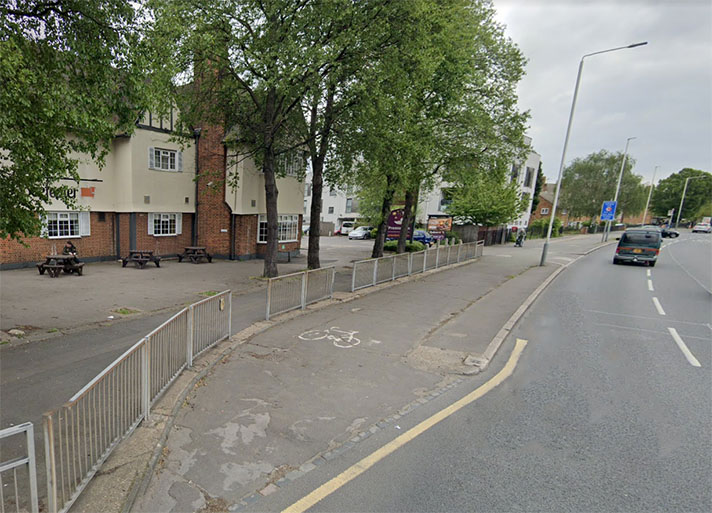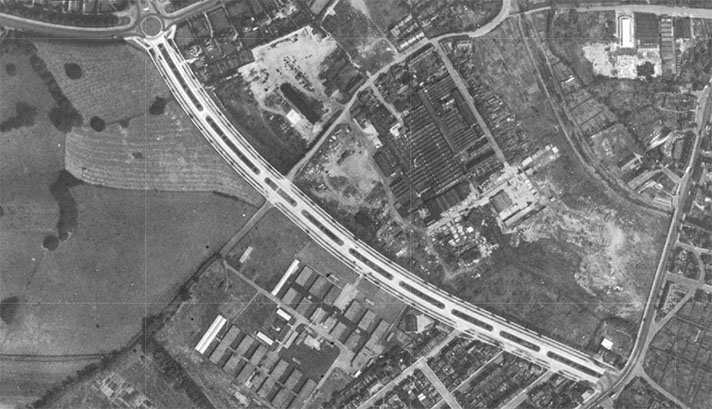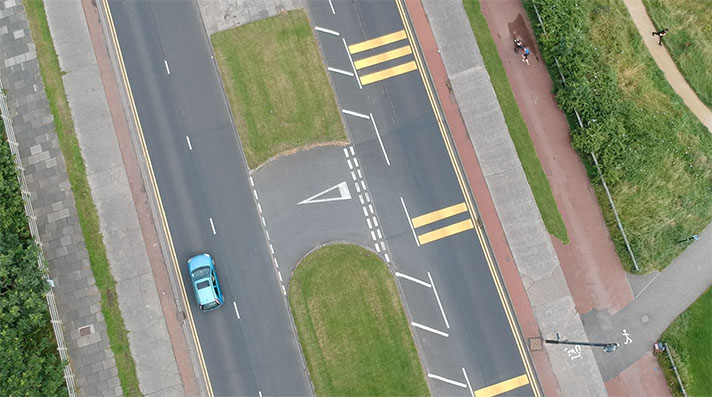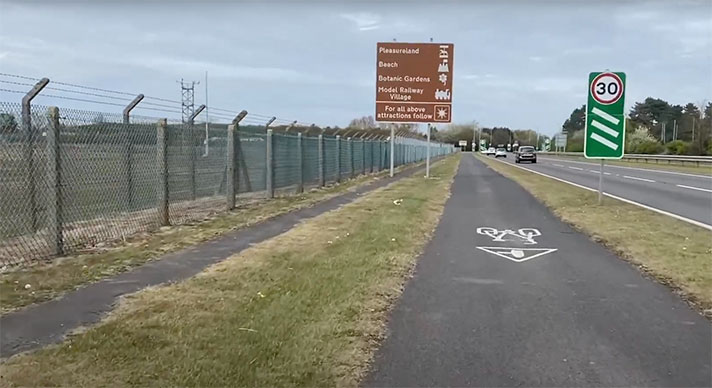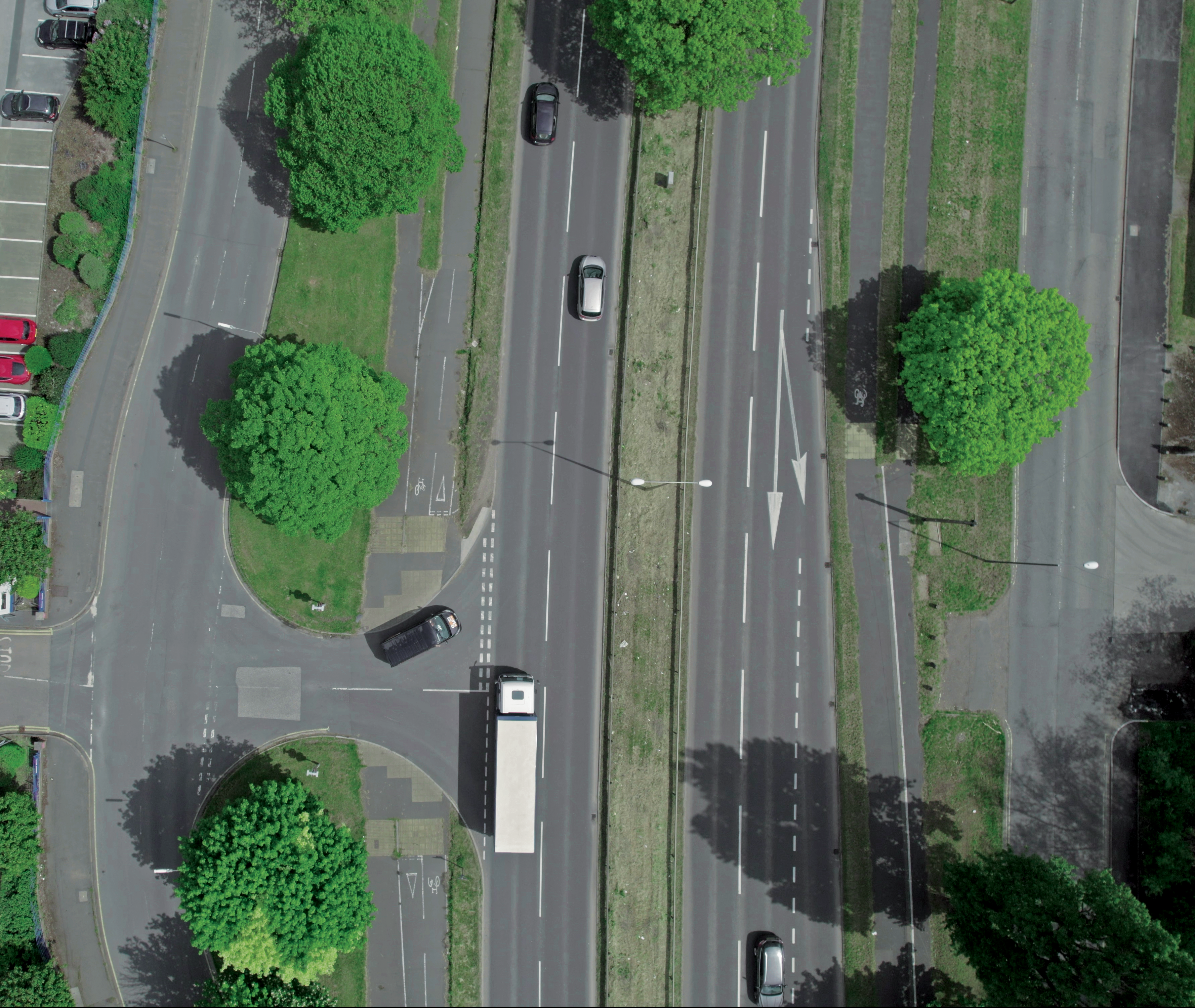
Cycle tracks both sides of Derby’s Raynesway.
Derby’s Raynesway — initially known as “Town Planning Road No. 4” — was opened by Alderman Edward Paulson, Mayor of Derby, on 28 September, 1938. It was named for Alderman W. R. Raynes, long-time chairman of the Derby Estates and Development Committee.
“The new stretch of ring road two and one-third miles long, has been constructed at a cost of £15,000,” reported the Derby Daily Telegraph in advance of its opening. The newspaper reported that the road was to be opened by Leslie Burgin, the then Minister of Transport.
An official of the Derby Borough Surveyor’s Department told the newspaper that the “cycle tracks each side of the road will extend the full length of the new section, a distance of 2,300 yards. They will be nine feet wide, and will have the same surface as the main road, which will be of concrete, and access to the road will be provided every quarter of a mile. Use of them will not be compulsory, but it is expected that they will be of value to cyclists travelling to the Spondon works of British Celanese, Ltd.”
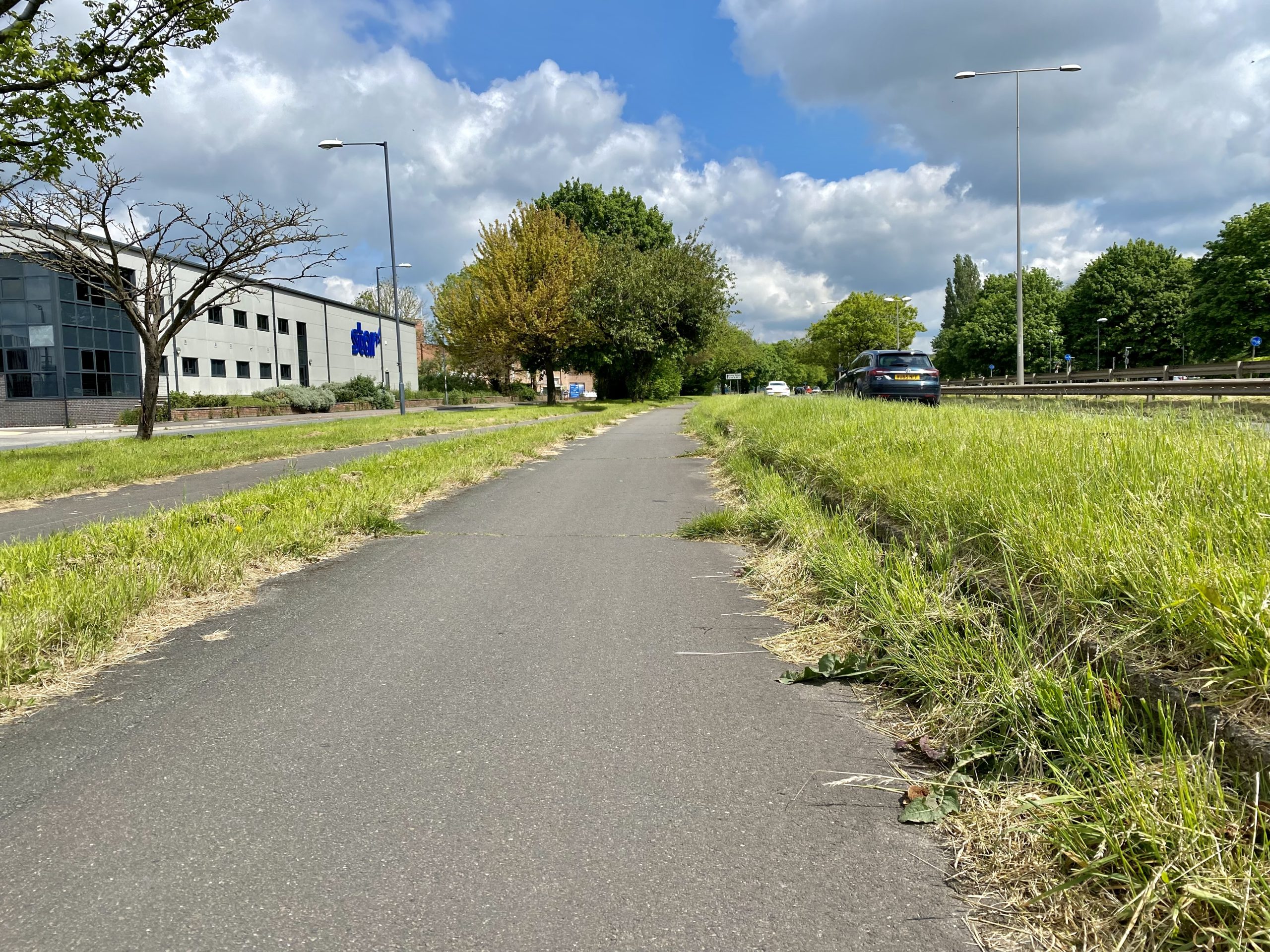
The roadside kerbing on this part of Raynesway is 20-cms deep.
Before building the road, Derby Town Council sent an engineer on a fact-finding trip to the Netherlands. “Road authorities on the Continent,” pointed out an official from the council, “are much more advanced in catering for cyclists than those in this country.”
Mr. W. G. Penny, chief engineering assistant of the Highways Department, visited the Netherlands to “inspect cycle tracks constructed along main roads in that country.” The idea, reported the Derby Daily Telegraph, was that “much useful information may be obtained in this way.” The fact-finding trip cost the council £3 13s. 6d.
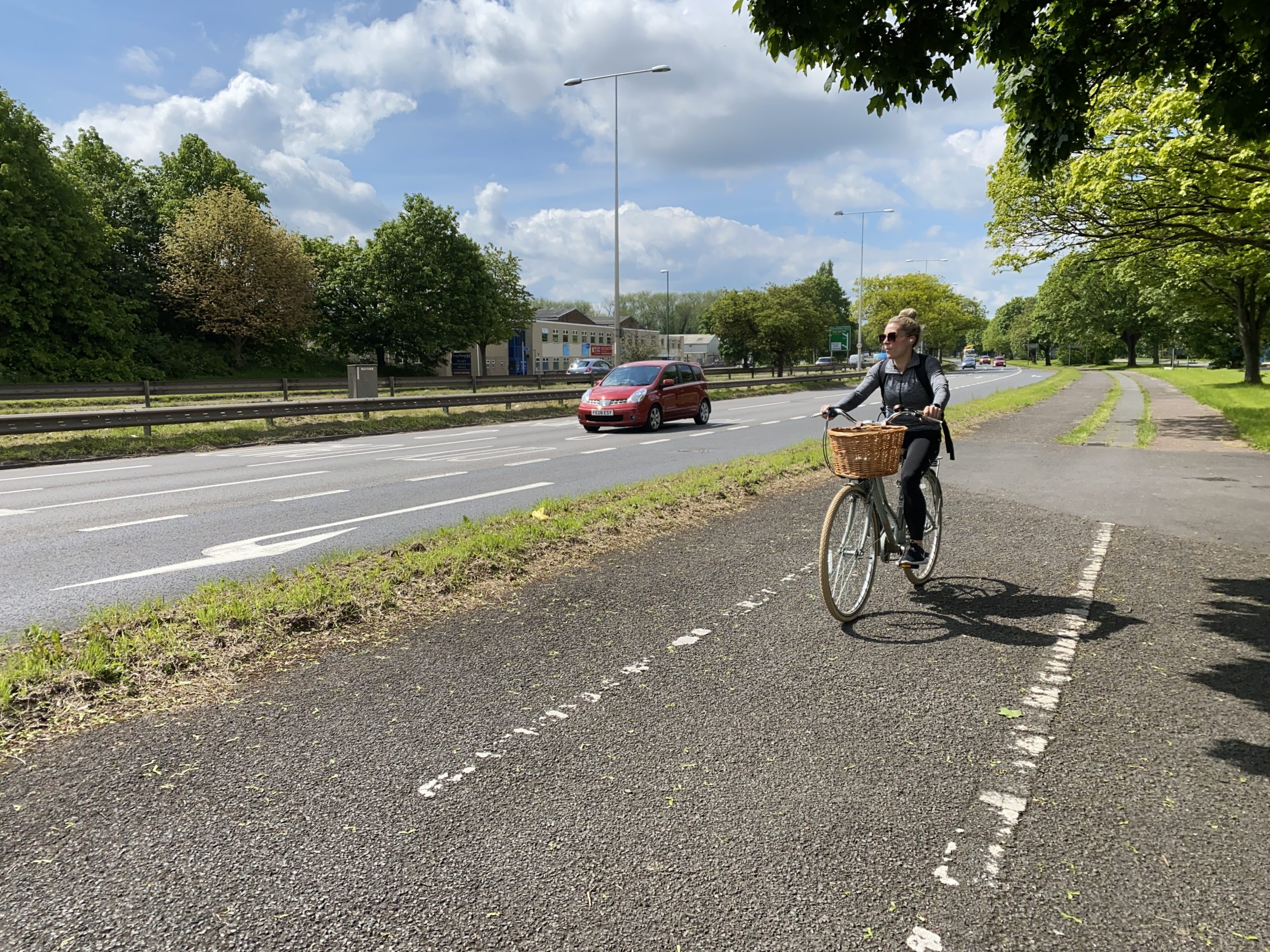
Verge-separated cycle track and footway merges into shared-use path.
The overall width of what became known as Raynesway was 120 feet, “comprising two carriageways each 22ft in width, two verges, each 7ft in width; two cycle tracks, each 9ft in width; two side verges, each 3ft in width; and two footways, each 8ft in width,” reported the Derby Daily Telegraph confirming that the cycle tracks were tinted:
“The carriageways were constructed in concrete, and each was divided into two lanes which were easily distinguished by reason of a difference in the colour of the surface. Cycle tracks were constructed in red concrete, and, therefore easily distinguished.”
During WWII, Raynesway was used for storing military vehicles, a common role for bypass roads at this time.
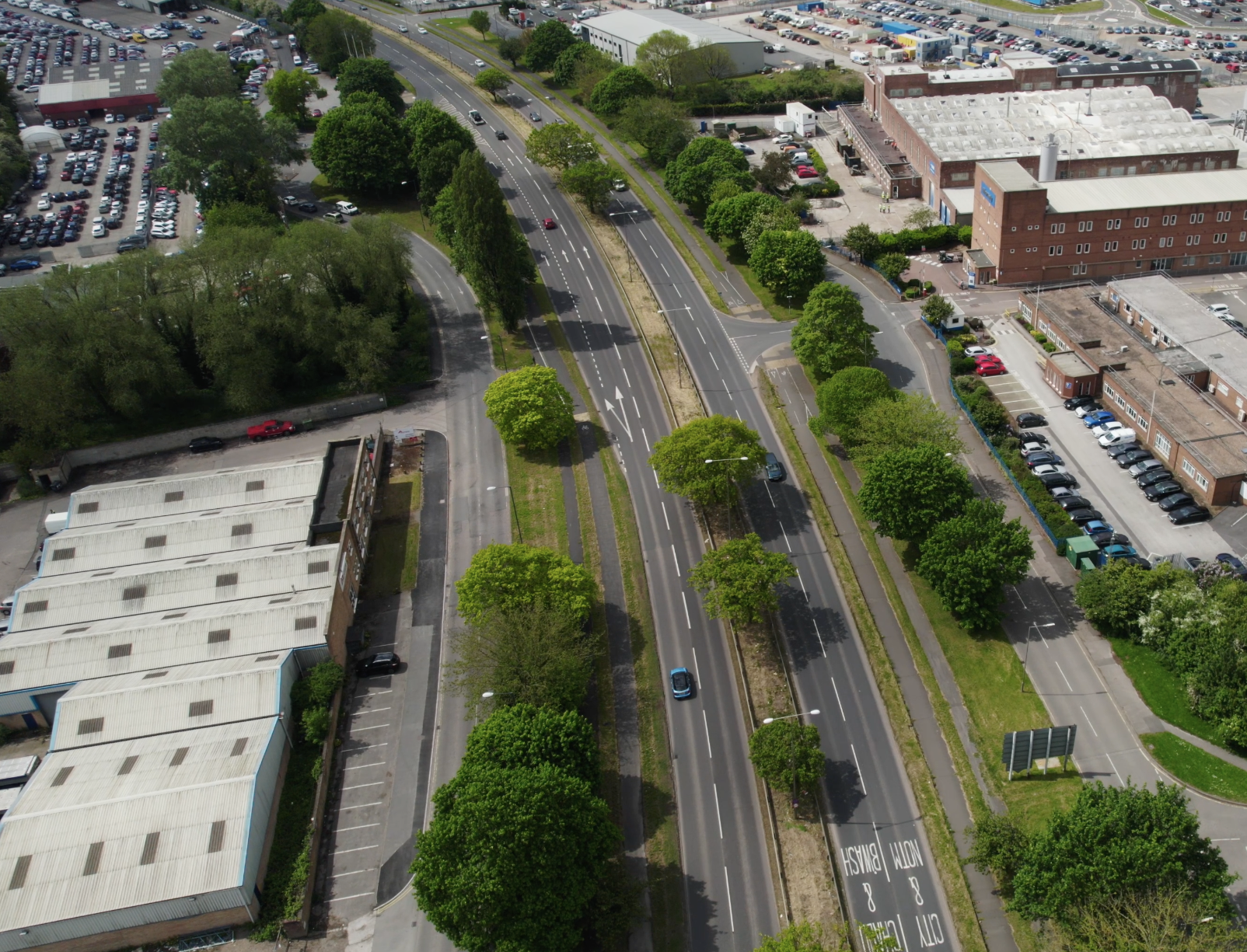
Then as now, Raynesway connects industrial units.


